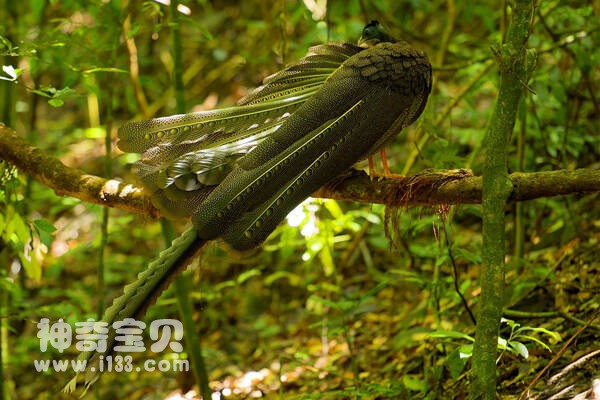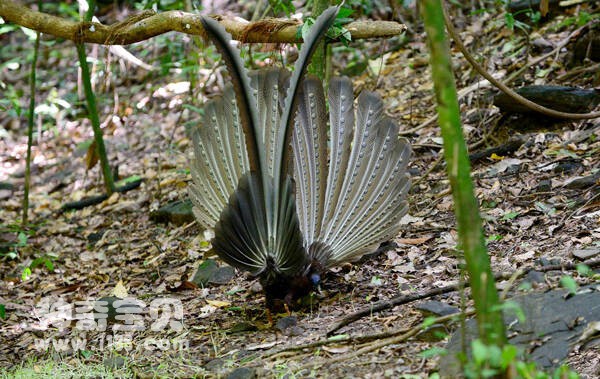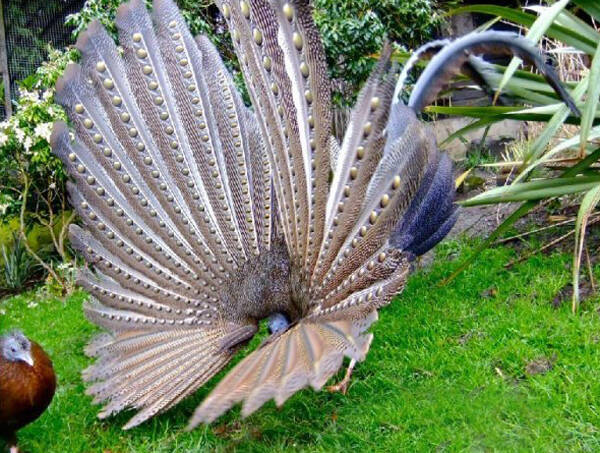Argusianus argus
IUCN
LCBasic Information
Scientific classification
- name:Argusianus argus
- Scientific Name:Argusianus argus,Great Argus
- Outline:Landfowl
- Family:Chickeniformes P.family P.Genus
Vital signs
- length:105-200cm
- Weight:1.59-2.725kg
- lifetime:15 years or so
Feature
The lower end of the wing has a number of blue spots, like a pair of big eyes, hence the name, is the most beautiful bird in Southeast Asia
Distribution and Habitat
It is found in Brunei Darussalam, Indonesia, Malaysia, Myanmar and Thailand.
Regional extinction: Singapore.
Pheasants don't migrate. It inhabits lowland primary and logging forests and lives in high, dry areas ranging from sea level to about 1300 m above sea level, but mainly below 900 m.
Appearance
The body length of the pheasant is 160-200 cm, and the tail length of the male bird is 105-143 cm. The female is 72-76 cm long and the female tail is 30-36 cm long. Male birds weigh 2040-2725 grams and female birds weigh 1590-1700 grams. The body feathers are generally brown, the head and neck are blue, the upper breast is red, the crown and nape feathers are black, and the feet are red.
The rooster is the largest of all species in the pheasant family, up to 2 meters long. Their tail feathers are very long, and the most distinctive feature of the male bird is the large, broad and long secondary flight feathers and tail feathers, and the long wings are decorated with intricate large eye spots. Male chicks will have adult feathers by the age of three.
Male and female plumage are different. The female has darker feathers, smaller individuals, shorter tail and wing feathers, and smaller eye spots. Both sexes have distinctly exposed blue facial skin, as well as a black crown. There ar
Details
Tragopan (Argusianus argus) is known as the Great Argus and has two subspecies.

The pheasant roosts in trees at night and rummags for food on the woodland floor during the day, spending most of its time alone, except during breeding when the females gather to watch the males display in the courtship grounds. The pheasant is not as colorful as other pheasants, but its courtship is unique. The male chicks clear the forest for courtship. The male will crow loudly to attract the female, and spread his wings in front of the female in a fan shape, showing the eyes on the wings, while the real eyes are hidden in the center, watching the female. For this reason, Carolus Linnaeus gave them the scientific name of Argus, a giant of Greek mythology.
The pheasant feeds mainly on leaves, seeds, fruits, but also insects and small vertebrates.

Pheasants are monogamous. Male birds maintain territories that include dance grounds for courtship, and they advertise their presence to females with calls and songs by removing leaves, sticks, and branches during courtship performances. When a female arrives, the male splits his wings into two impressive balls, showing off hundreds of eye spots. Mating is multiple, after mating, the female leaves the forest in a secluded area on the ground, scraping the grass to lay 2 eggs for the nest, incubation period is 24-25 days, the male does not participate in nesting, hatching and rearing. Chicks grow rapidly and leave the nest shortly after hatching, while subadults grow more slowly and reach sexual maturity by the third year.

The distribution range of megacanthus is limited, due to the man-made destruction of the environment, the occurrence density is low, is blocky distribution. It is moderately small and has the potential to decline rapidly and continuously throughout its distribution range, so it is classified as near threatened.
Listed on the International Union for Conservation of Nature (IUCN) 2016 Red List of Threatened Species ver 3.1 - Near Threatened (NT).
Listed in the Washington Convention CITES Appendix II protected animals.
Listed in Appendices I, II and III of the Convention on International Trade in Endangered Species of Wild Fauna and Flora (CITES) 2019 edition Appendix II.
Protect wild animals and eliminate wild meat.
Maintaining ecological balance is everyone's responsibility!








